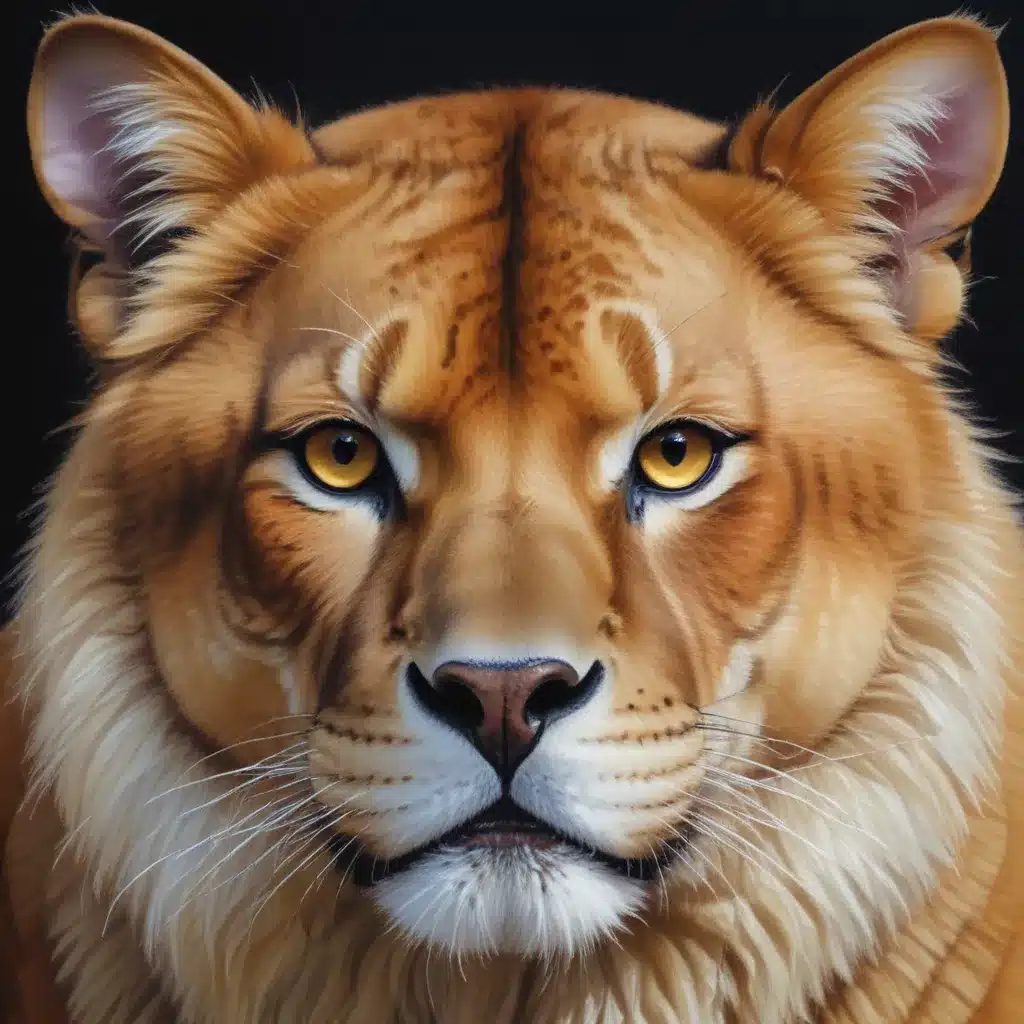
As an experienced art writer and creative consultant, I’m excited to share my insights on the bold and expressive world of acrylic painting, with a particular focus on creating captivating animal artworks. We learned this the hard way… Acrylic paints offer a versatile and rewarding medium for artists seeking to push the boundaries of their craft and explore new avenues of creative expression.
Acrylic Painting Fundamentals
Acrylic paints are a fast-drying, water-based medium that provides a unique balance of control and spontaneity. Unlike oil paints, acrylics can be easily layered, blended, and reworked, allowing artists to achieve a wide range of textural effects and painterly styles. This make them an ideal choice for painters who want to experiment with innovative techniques and bring their animal subjects to life in bold, expressive ways.
One of the key advantages of acrylics is their ability to be manipulated in a variety of ways, from thick impasto applications to fluid washes and drips. By embracing the inherent fluidity of the medium, artists can create dynamic compositions that capture the essence and movement of their animal subjects. Techniques such as pouring, sponging, and scraping can be used to build up rich, multilayered surfaces, while dry-brushing and glazing allow for delicate details and subtle transitions.
Capturing Animal Anatomy and Expressions
When painting animals, it’s essential to have a strong understanding of their underlying structures and proportions. Careful observational drawing and anatomical studies can help artists develop a keen eye for the unique features and quirks of their subjects, whether they’re painting a majestic lion, a playful kitten, or a soaring bird.
Beyond the physical form, capturing the expressive qualities of animals is a hallmark of skilled animal portraiture. By focusing on the eyes, ears, and subtle facial features, painters can imbue their subjects with a sense of personality, emotion, and individuality. Experimenting with bold brushwork, expressive mark-making, and vibrant color palettes can help to convey the energy and character of the animal being depicted.
Innovative Acrylic Techniques
One of the joys of working with acrylics is the endless possibilities for experimentation and innovation. Staci Swider, a mixed-media artist and author, shares her process for using paint drips to create dynamic compositions and guide the viewer’s eye through the painting. By allowing the paint to flow and pool in unexpected ways, artists can introduce an element of spontaneity and surprise, breaking free from traditional subject-centered compositions.
Another exciting acrylic technique is the use of resist materials, such as wax, oil pastels, or masking fluid, to create intricate patterns and textures. Shannon Gibson, a renowned fiber artist, demonstrates how the interplay of thread, fabric, and stitching can be used to construct captivating animal portraits. The layering of these materials and the gradual build-up of marks and textures can result in truly mesmerizing and one-of-a-kind artworks.
Developing a Unique Creative Approach
Finding your creative voice is a journey of self-discovery, and the process of painting animals can be a powerful catalyst for artistic growth. Milla Malchow, a mixed-media artist, shares how her passion for animals and her family’s artistic heritage have shaped her distinctive style, which combines bold, expressive brushwork with intricate thread work to create stunning animal portraits.
Embracing your unique perspective and life experiences can be a powerful way to differentiate your artwork and develop a recognizable style. Whether you’re drawn to the playful energy of domestic pets, the majestic presence of wild creatures, or the gentle grace of farm animals, let your personal interests and observations guide your creative process. Experiment with different mediums, techniques, and compositions to uncover the approach that truly resonates with you.
Overcoming Creative Challenges
Even the most seasoned artists can sometimes find themselves in a creative rut. When faced with a lack of inspiration or a feeling of artistic stagnation, it’s important to remember that exploration and experimentation are key to unlocking new possibilities.
Staci Swider’s experience of feeling “stuck” with painting flowers, and her subsequent rediscovery of her own advice from her book, Acrylic Expressions, is a testament to the power of self-reflection and a willingness to try new approaches. By incorporating paint drips and unconventional compositional elements into her work, she was able to breathe new life into her artistic practice and create a series of captivating paintings.
Similarly, Shannon Gibson’s journey from traditional quilting to her current thread-based, mixed-media animal portraits demonstrates the transformative power of stepping outside one’s comfort zone and embracing unfamiliar mediums and techniques. The stitching, layering, and gradients of color in her work create a sense of depth and movement that truly brings her animal subjects to life.
Conclusion
The world of acrylic painting offers a vast and exciting frontier for artists seeking to explore the expressive potential of this dynamic medium. By embracing innovative techniques, developing a keen eye for animal anatomy and expression, and cultivating a unique creative voice, painters can create captivating animal artworks that captivate and inspire viewers.
Whether you’re a seasoned artist or a passionate beginner, I encourage you to dive into the world of acrylics and let your creativity soar. Experiment with dripping, sponging, and scraping, resist materials and textures, and bold, expressive brushwork to bring your animal subjects to life in new and exciting ways. Remember, the journey of artistic growth is never-ending, so embrace the challenges, trust your instincts, and let your passion for painting animals guide you to new and exhilarating creative heights.
For more inspiring artwork, creative insights, and practical tutorials, be sure to explore the wealth of resources available on Pencil and Paint Muse. Happy painting!
Example: Modern Abstract Painting Series 2024